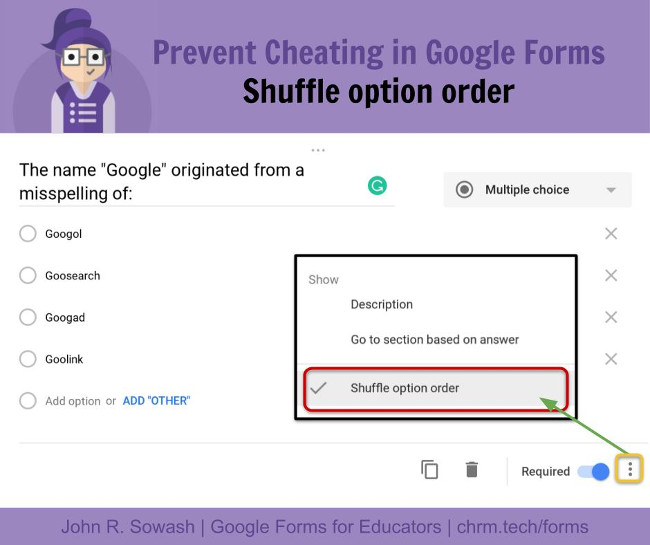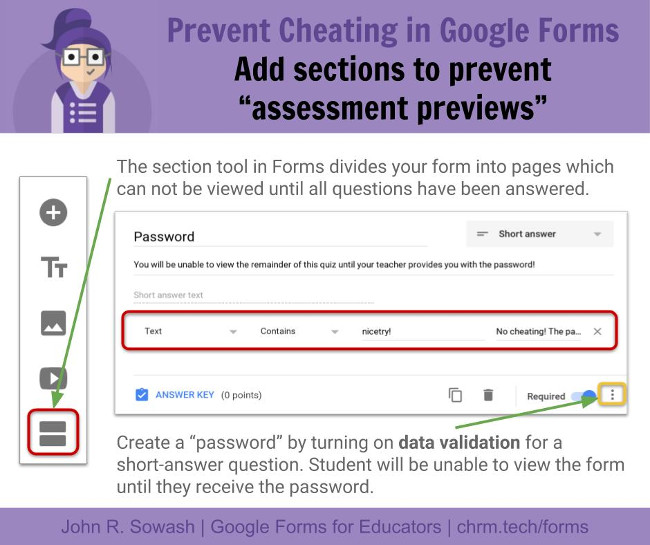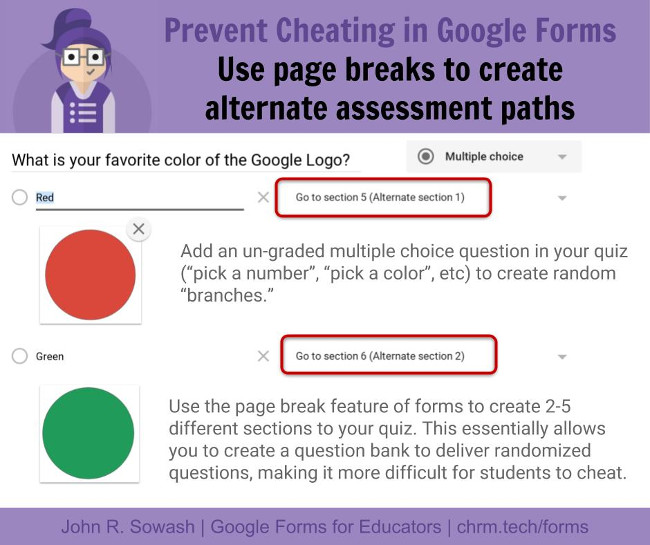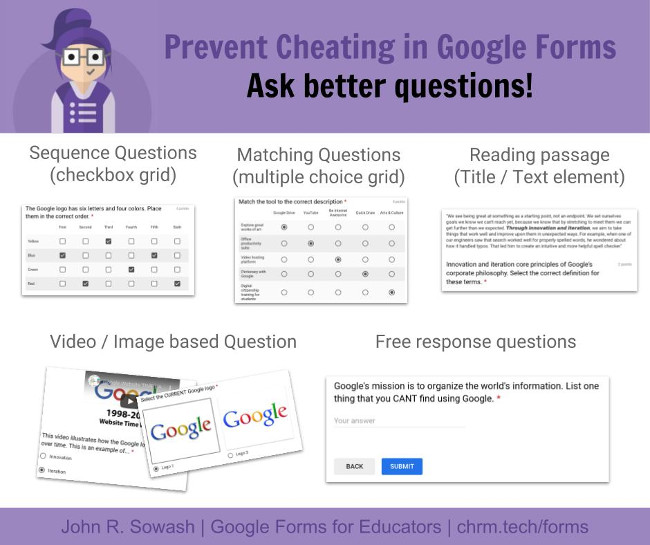5 Ways to Prevent Cheating on Your Google Form Quiz
Get a cheat proof Google Form quiz for class using these top tips

If you are using Google Forms to give quizzes and tests in your classroom, you are likely aware that some students have figured out various ways to "game" forms to get a better grade. But you can stop cheating on Google Forms using some of these top tips.
While Google Forms can make a teacher's life easier, in offering a system that allows for quick creation of quizzes, it can also create an opportunity to cheat. That said, if you take the necessary precautions listed below, it's well worth using. For one thing, you can use a vast array of pre-written quizzes and templates, making it easier to set a quiz without taking up lots of prep time.
Want to learn more? Check out our feature, What is Google Forms and How Can It Be Used by Teachers?
Before we go into the ways to prevent cheating, be aware of the issue by looking below at some of the ways students try to cheat Google Forms:
- Open a tab to look up answers
- Preview your form before class to look up answers
- Send questions to their friends
- Share answers with friends
- Take screenshots of your the quiz questions
- View the HTML page source to find answers
- Look at a friends screen to select answers
- Right-click on words to check definitions and spelling
- Share answers with classmates during passing time
- Write down "cheats" on their hand or paper
- What is Google Forms and How Can It Be Used by Teachers?
- How to Stop Cheating in Remote Learning
- 10 Sites for Checking Plagiarism
5 Ways to Combat Cheating with Google Forms
1. Shuffle answer choices to block screen creepers

When asking a multiple choice question, click on the "snowman" at the bottom right to find the "shuffle option order" feature that will randomize the order of the answer choices in your question.
Shuffling answer choices will make it more difficult for "screen creepers" to copy answers from a classmate.
Note: Google Forms does have a "shuffle question order" feature, however using it can lead to issues. I recommend shuffling answers over shuffling questions.
Tools and ideas to transform education. Sign up below.
2. Use page sections to block assessment previews

Add sections to your quiz to prevent students from previewing a form before class. This is a common problem if you post your quiz through Google Classroom to all of your sections early in the day.
You can take this a step further by adding a "password" to your form to prevent students from moving ahead until you are ready.
An easy way to do this is to collect their personal information (name/section) on the first page of the form, but require a password before they can access the quiz question.
Set up a password by adding a short-answer question and using the data validation feature to require a specific number or phrase.
Note: This is not a 100% secure solution and should not be used to protect sensitive information.
Get the latest edtech news delivered to your inbox here:

3. Use page breaks to create alternative assessment paths

Google Forms doesn't have a question bank feature to create different assessments for each student. However, you can create a similar experience by creating a branched form.
First, add an ungraded multiple choice question in your quiz: “pick a number,” “pick a color,” etc.
Next, set up 3 to 5 different sections to your quiz using the section feature mentioned in tip #2 above. Add as many questions as you like to each section.
Finally, add a "go-to" rule to direct students to a different section of the based on their response to the ungraded question that you added.
4. Prevent cheating by asking better questions

Don't limit yourself to multiple choice questions. By broadening the types of questions you make it more difficult to cheat while at the same time better testing the students' knowledge.
Consider options such as:
- Sequence questions - Use the checkbox grid question type to ask students to sequence or arrange items in a list.
- Matching questions - Use the multiple choice grid question type to create a matching question (great for vocabulary quizzes!)
- Reading Passage - Use the title/text element to add a short reading passage.
- Video question - Have students watch a video and then answer questions about it (great for math and world language).
- Image question - Images can be used as the question stem or question choices (great for science, math, social studies, and elementary students).
- Free response / short answer - If a student can answer all of the multiple choice questions correctly, but can't articulate 2 to 3 sentences on the same topic, then something is wrong.
5. Enable locked quiz mode

Locked quiz mode is one of many tools you have to protect the integrity of your assessments. When used in combination with the tips above, you have done your part to protect the integrity of your classroom quizzes.
Locked mode prevents students from accessing external resources while taking a quiz. Their tabs, extensions, chrome apps, and screenshot functions will be disabled during the duration of the quiz.
You can turn on this feature the settings page on your Google Form OR when assigned through Google Classroom.
If you use some/all of the tips listed above, you have done your part to protect the integrity of your assessments and encourage your students to practice academic honesty.
There is no way to be certain that students can't cheat on an assessment. Ultimately, they are harming themselves and their academic growth. Our job is to encourage, instruct and train them to do their best and show good character, even when they have the opportunity to cheat.
